what of Lydia del Olmo and Xosé Magalhaes excites. So much so that we dedicated a love letter to them and their restaurant in Ourense a few months ago. For daring, for jumping into the void, for believe that everything is possible … because it is, despite the four times (four months in total) that they have had to close due to restrictions.
They dreamed it up in 2019 and opened Ceibe in August 2020: a charming restaurant in the old town of Ourense . There, in a pedestrian alley, very close to the cathedral, recall the old recipe book from the Galicia of their grandmothers Rosa (Nené) and Dolores.
The first, Lydia's, is from To Illa, between Entrimo and Lovios , a village of 30 inhabitants that in summer is around 100. Xosé's is from Xinzo , which reaches two hundred. But there is a third Galician that has served as inspiration: Emilia Pardo Bazan and its culinary literature of popular recipes . Her childhood memories, the producers, the humblest raw material and the small ecosystems that make up Galicia complete her creative universe.
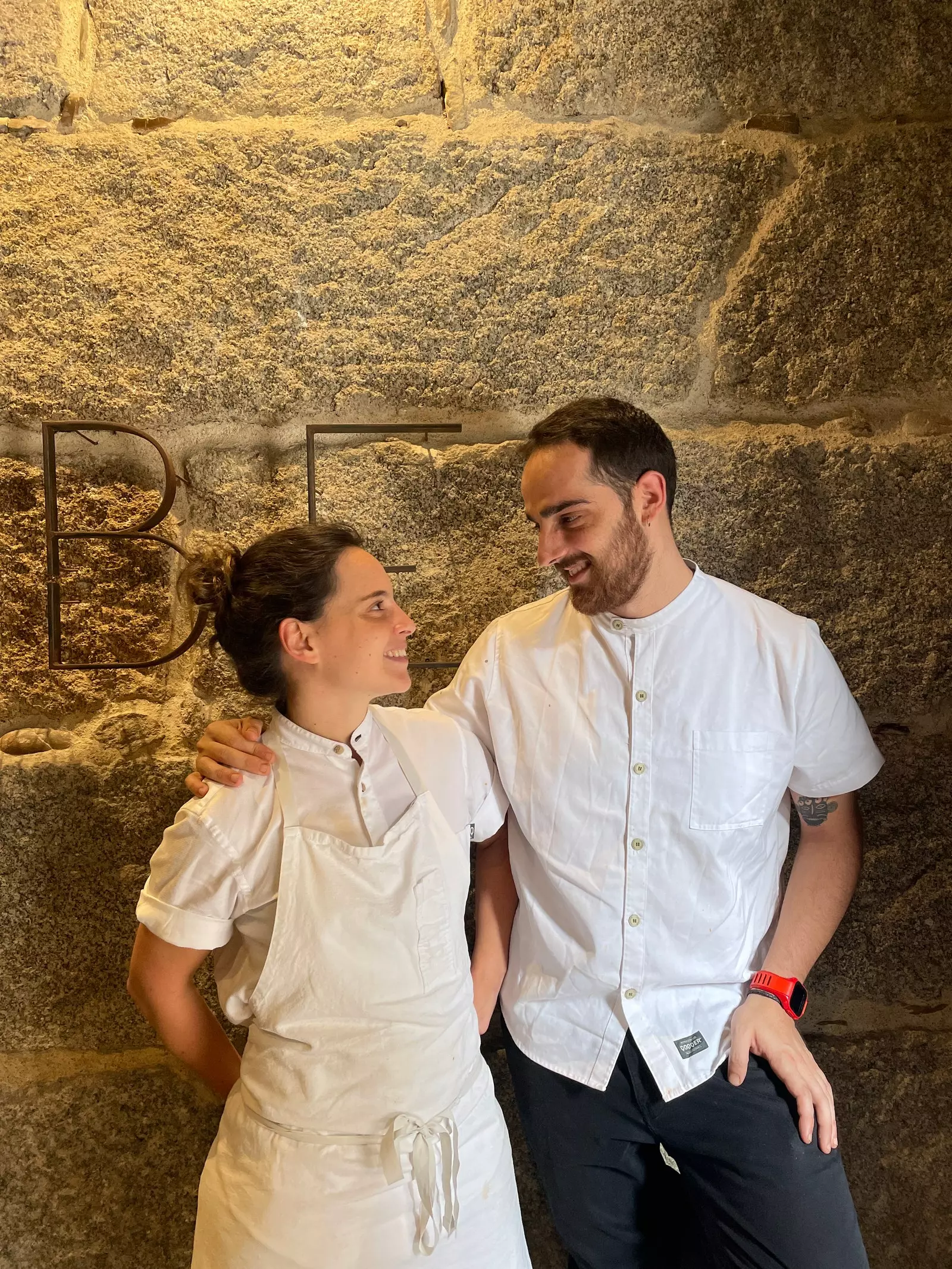
Lydia del Olmo and Xosé Magalhaes de Ceibe.
In this adventure he accompanies an entirely Galician and very young team : the average age is 22 years, although they are a decade older. That time has served them to tan in some of the best restaurants on the peninsula: they met in 2016 at Casa Solla (Poio, Pontevedra), but Lydia also went through Culler de Pau (O Grove), Trigo (Valladolid), Enjoy (Barcelona) or Lú Cocina and Alma (Jerez de la Frontera, Cádiz).
Meanwhile, Xosé was at Yayo Daporta (Cambados, Pontevedra), Etxanobe (Bilbao), Azurmendi (Larrabetzu, Vizcaya), Mugaritz (Errentería, Guipúzcoa) and Euskalduna Studio (Oporto). have moved and they have seen other kitchens before creating theirs, They have used the time.
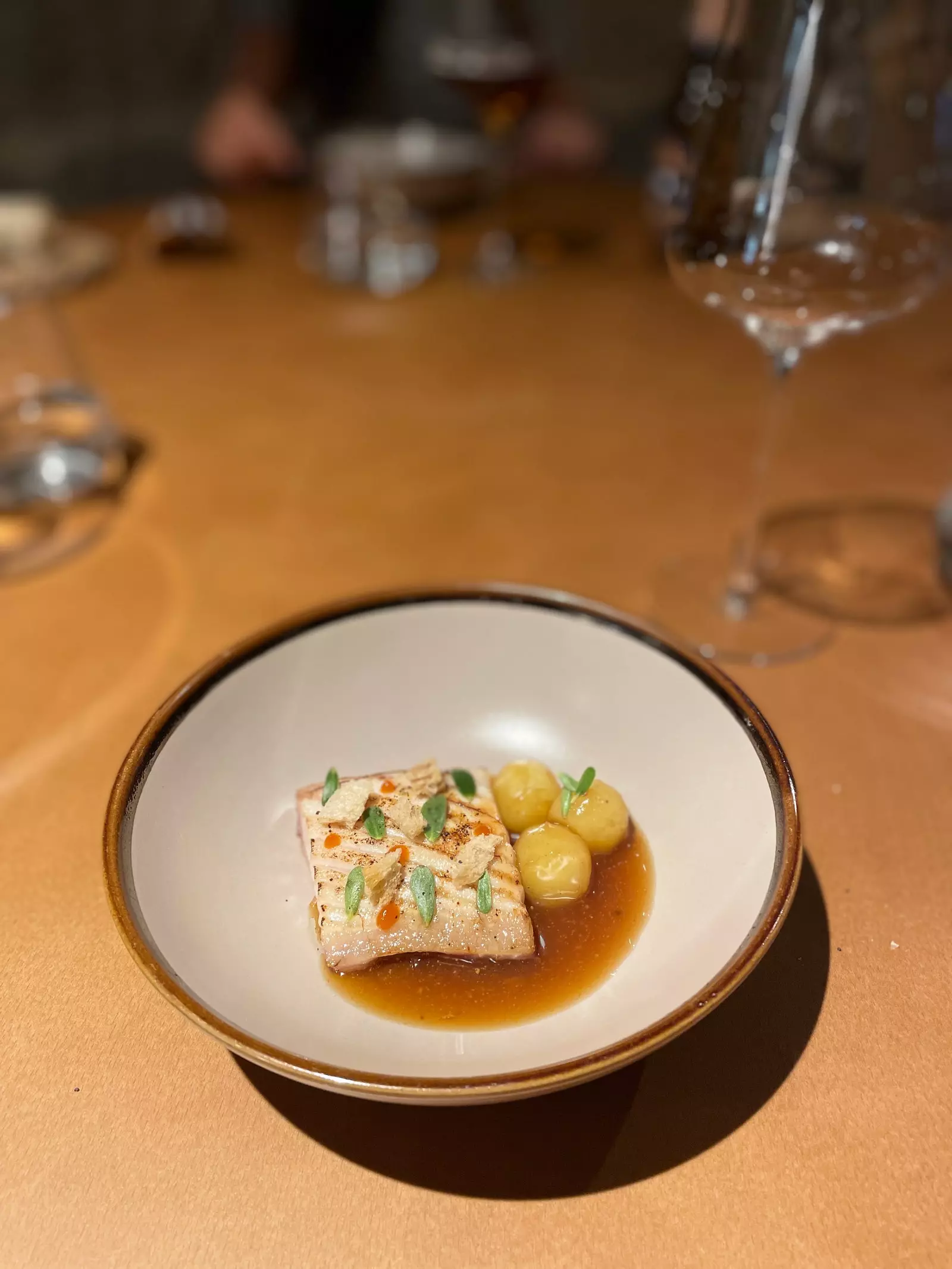
Burela tuna with prawn broth, crab and pork shoulder.
Now Ceibe is what occupies her hours. As soon as you enter, you realize that the slow and thoughtful evolution that Xosé talks about has a reflection of him here. They have left nothing to chance. As in Galicia everything revolves around the kitchen, theirs is included in the dining room. when you sit down, the dance begins between the room and the stoves.
“We do not want there to be that barrier between kitchen and living room , but that everything flows, that there is not so much protocol ”. in Ceiba they welcome you with a queimada in the form of broth to combat the cold as a declaration of intent: "You're home", they whisper to you without words. "It's our way of showing our hospitality and a sample of what we want to do throughout the menu”.
While they serve us a glass of white wine, “Sen label” (Padriñán, Pontevedra), Lydia tells us that when they opened they couldn't find a sommelier . “I had to assume that role of designing the menu and I looked for projects with personality because I am interested in the story behind a wine. We are surrounded by so much vineyard that there are very interesting and small things that must be given visibility”.
Later, a string of recognized flavors that seek to help us remember the seasons of our childhood. It all starts with a Bolo de cocido stuffed with the meat from the stew , cashira and chorizo or with Xinzo de Limia's roast potato with bearnaise and bacon cured by themselves for three months.
“With the appetizers we want to honor the products inside that characterize the most rural Galicia”. Their starters keep talking about season products and of origin in dishes such as its tomato soup with sweet potato , tomatoes, courgette and miso or in its Burela tuna with prawn broth, crab and pork shoulder, which is nothing more than his version of the caldeirada.
It is the turn of Chánselus Castes Brancas in the glass, by Bernardo Estévez, with grapes from the side varieties, treixadura, loureiro, albillo, godello and verdelho.
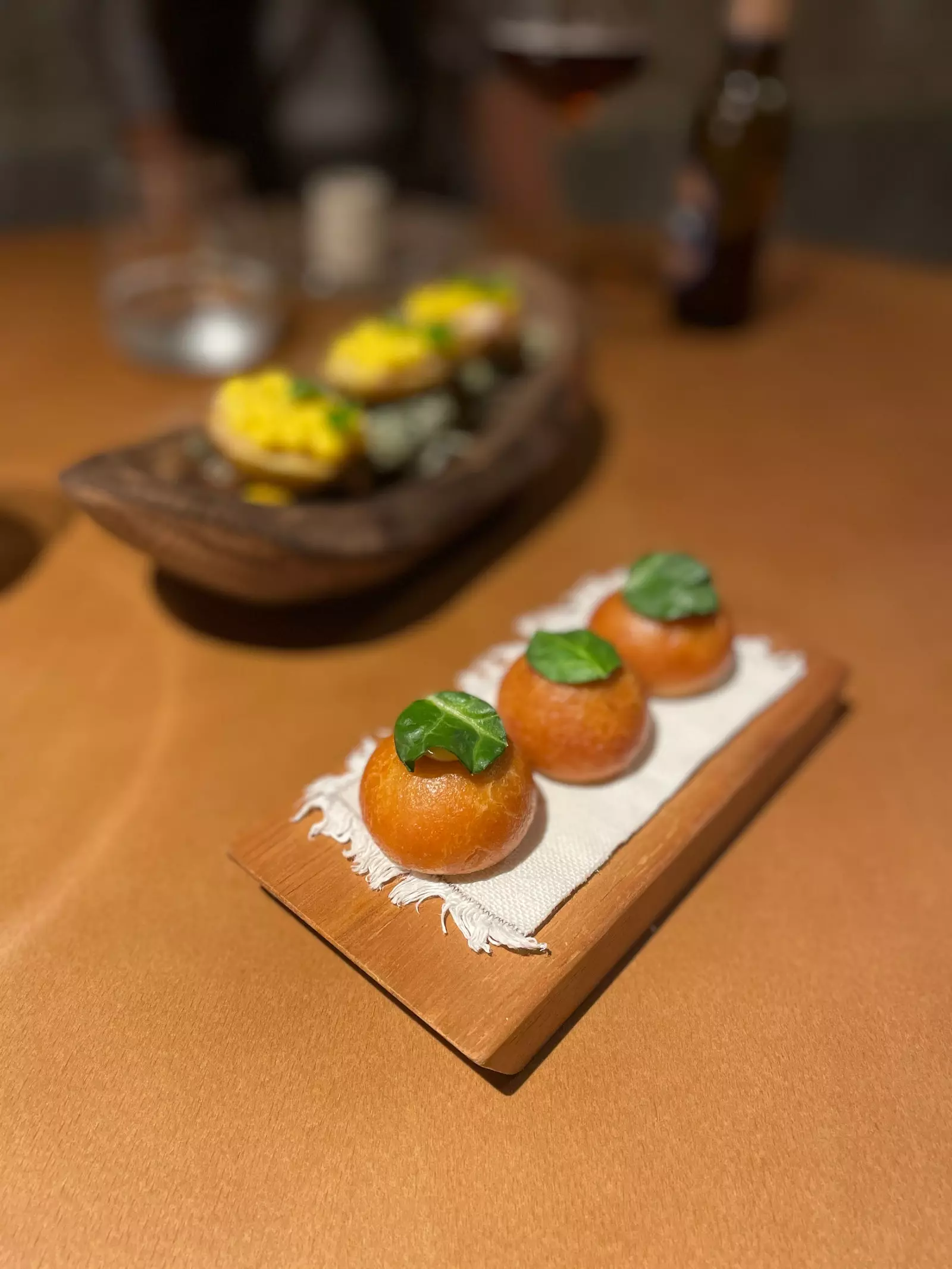
Galician stew bolus.
We continue with the menu: the scallop beurre blanc with emulsion of its corals , pork rind and pine oil is another of those snacks that make us savor that trip to Galicia from the table. continue with a delicate and crunchy bud (both raw and braised) with chicken pilpil, duxelle, smoked eel emulsion and marinated chicken. Creative freedom was this.
The symphony continues with a beans stewed in Galician broth , cured prawns and fresh figs or with a hake that is cured at home and accompanied by its version of the green sauce (they replace the parsley with seaweed to enhance the sea flavor of the fish) and knives. The sea on the plate.
We ask them for the cure of the fish and they explain to us that in Galicia it is called “lañar” (burying in salt) and that it is something common in the interior, since it is the way to preserve fish for longer. "For us Textures are very important. . There are products that, with different curing processes, achieve what we like: cured hake, for example, when cooked it swells”.
The salty part ends with an old beef tenderloin . "We represent the ecosystem of the animal together with the milk, which is burnt cream, and the grass (chard)". The aromas, flavors and aesthetics are the purest Galicia.
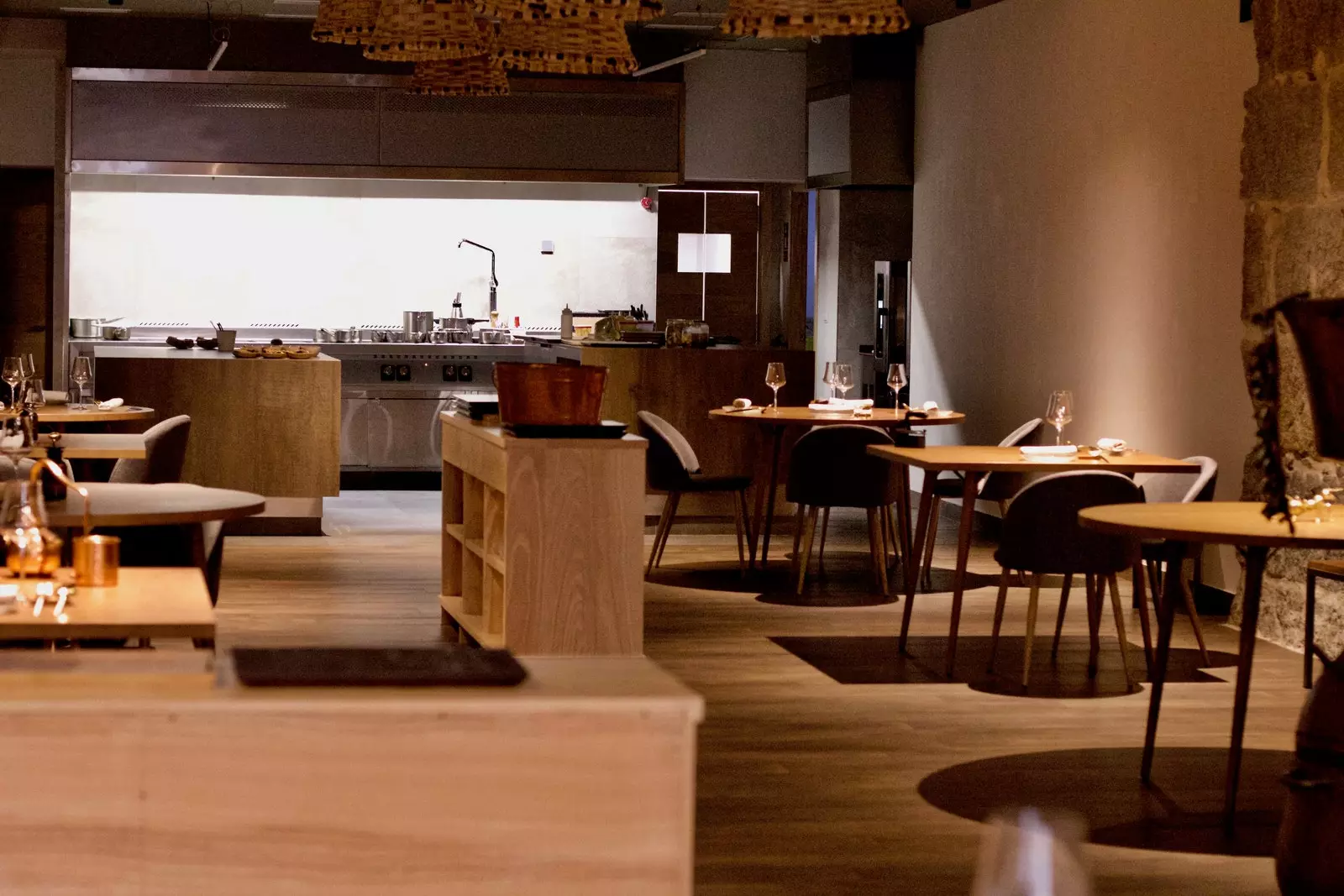
The living room.
They break with a melon and cucumber juice with mother of vinegar , to prepare the palate for the pre-dessert: tapioca, avocado, olive crumble and miso with lemon ice cream, which is surprising for its absence of sweetness. A wise daring but it is that the final fireworks comes next.
Their tribute to Galician liqueurs (“because in Galicia it is very typical to end with a shot of liquor and the bottle on the table”) it is called chocolate, pomace cream, coffee and cocoa crumble, chocolate tiles and coffee liqueur ice cream.
If you look around you, you will see other elements that also speak of roots, such as the threshing table and alembic , both Castilian because Lydia's paternal family is from Valladolid. The crockery has been made by Jose, from a town in Ourense , who is a potter, a friend of a friend. “We open a language between him and us. He went from making ashtrays and vases to creating tableware for Ceibe”.
The towels and napkins are the work of Xosé's mother , who is a seamstress. “We wanted to start a project with the little we could contribute and for us it was important to find ourselves in every corner looking at things that belonged to our grandmothers or that our mothers had made. Simple but authentic. We have turned the need into a way of understanding how we want the restaurant to evolve: from the proximity, the friends, the people who are close to us and the small artisans”.
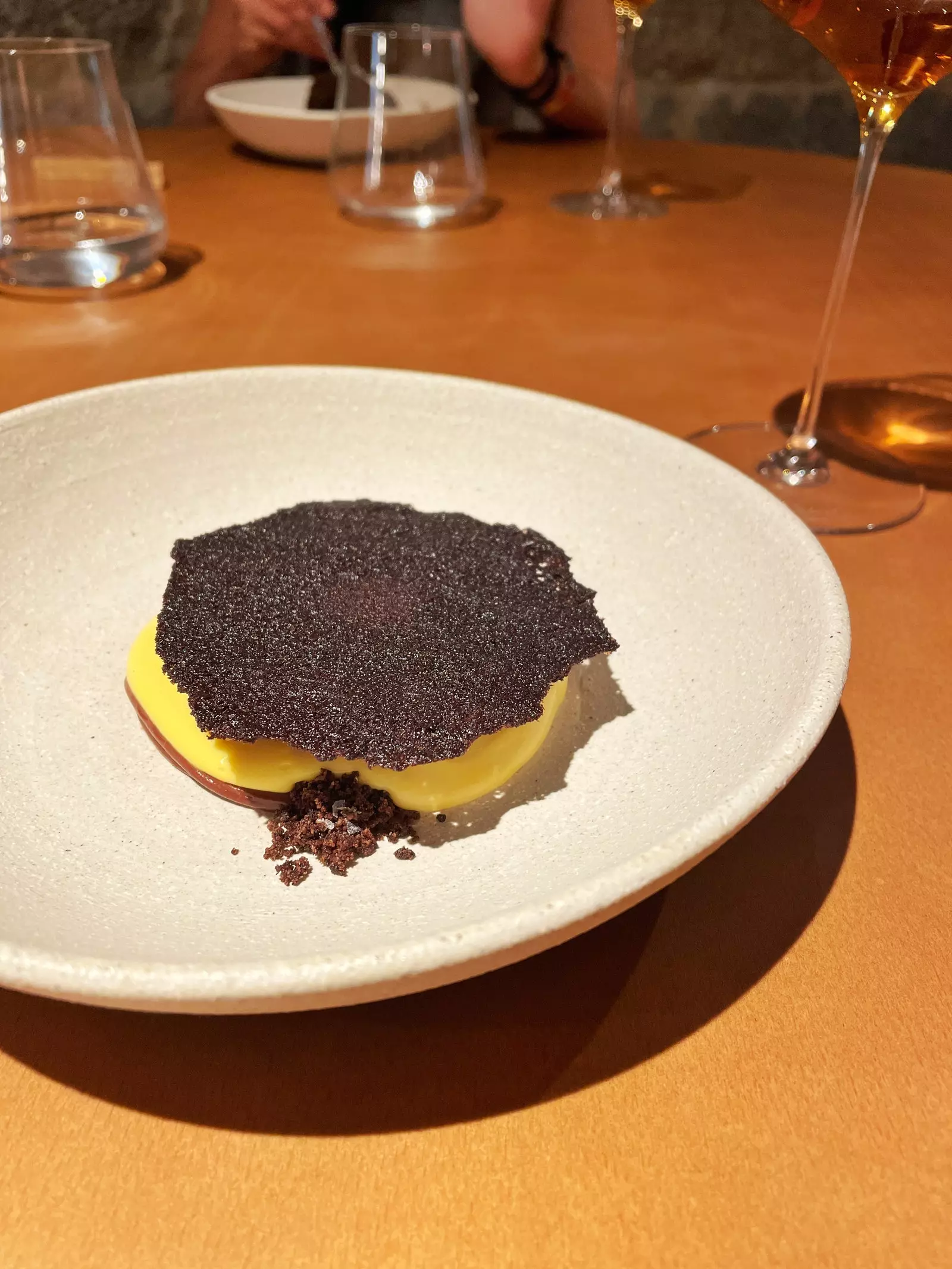
Tribute to Galician liqueurs.
In his way of seeing the world, the local producer plays his own role : the sprouts, flowers and some garden product such as chard or red courgette are from an organic garden in Pontevedra. Or Lola, who has a market stall and her own vegetable garden. The meat is from Abel, who has his own farm , slaughterhouse and butcher shop in Sarria, Lugo. The fish belongs to Marcos , whose headquarters are in Ourense and goes to the fish market every morning.
“What we need most is close to us” , Jose sentence. And they are themselves, because they spend 24 hours a day together. From the kitchen to the living room, from the living room to the house, from the kitchen to the world, which begins in Galicia. They work, live together and support each other. But, above all, they look at each other... and look together in the same direction at the same time . When that happens, you understand everything.
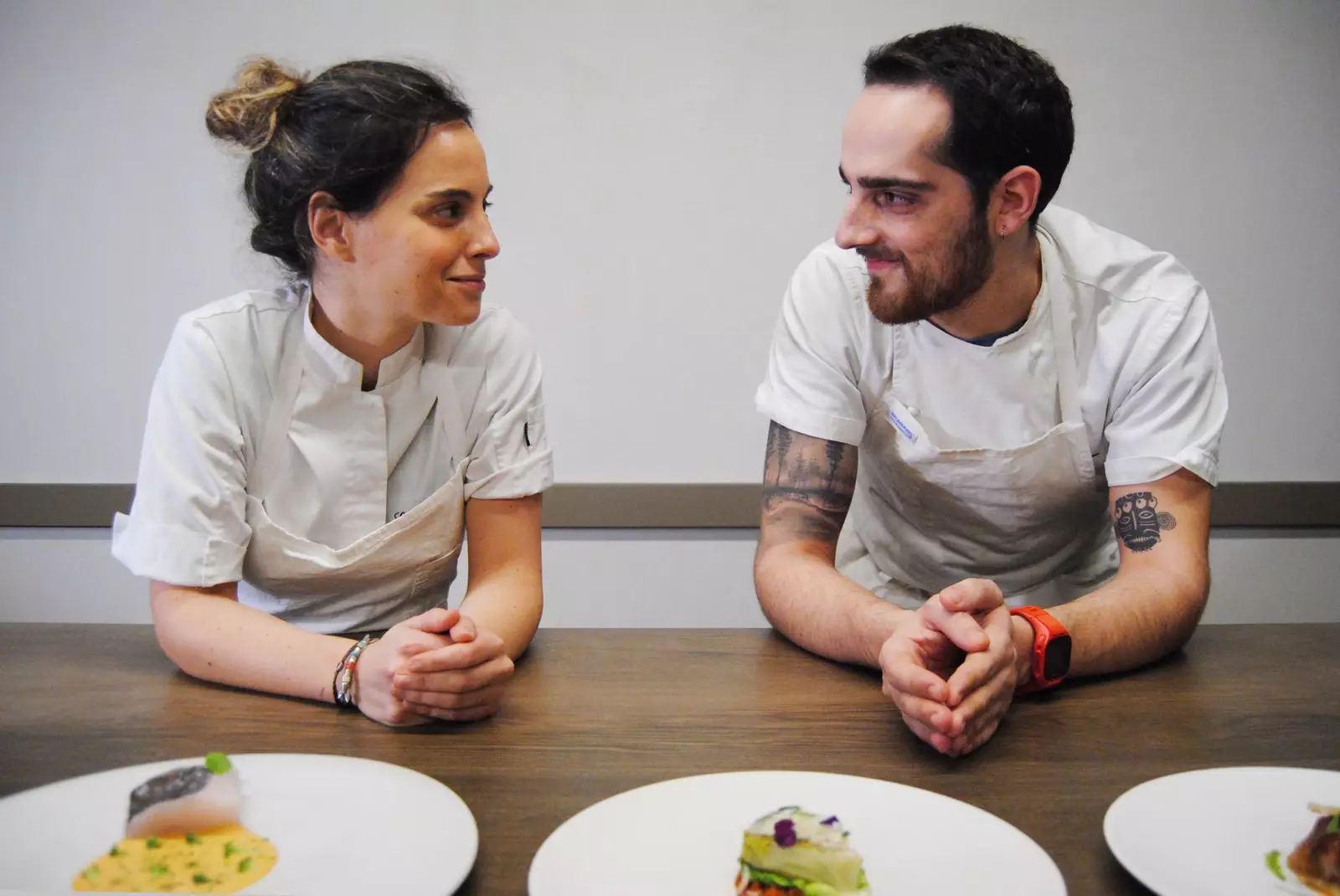
Lydia and Xosé are Ceibe.
Good harmony is also perceived in those people who are part of Ceibe. Three began in the kitchen and one in the living room. Now there are four and three, respectively. His right hand is Iago.
“He has been with us for a year now and he is the one who has always remained despite everything. We appreciate his gestures, his good work, the human factor. He was the first to be here when things weren't going well because of the restrictions. He is very young, he recently left school but has always worked in restaurants in Ourense. He solves his youth with his attitude and his desire to learn. He is becoming a chef with us: we try to get him excited by cooking a chard or some good sardines ”. When someone (in this case, Lydia) talks like that about his team, there are no words.
It's time to say goodbye, although we would stay here to live. Lydia sentences: “Despite the year that he is playing us, since we have had to close four times (four months in total), We are very happy. We started without a sommelier, without suits… and now we are dressed by Adolfo Domínguez. Despite the circumstances, we are never in the doldrums. There is Ceibe for a while”.
